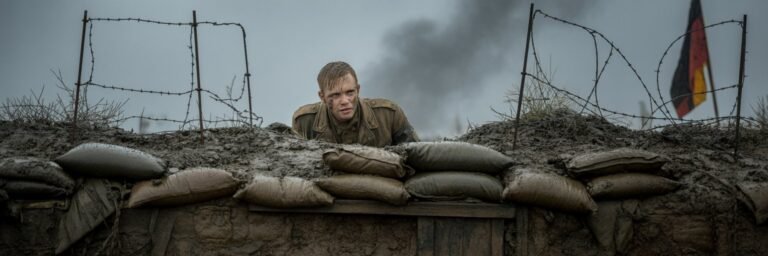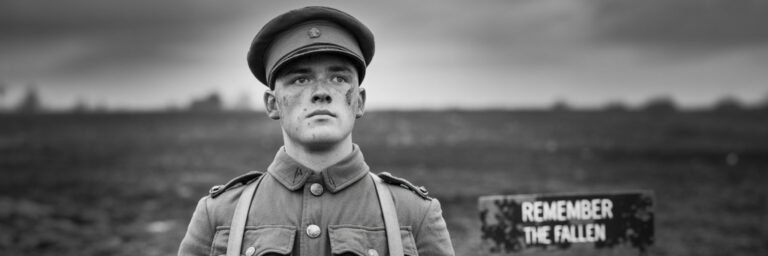INTRODUCTION
As twilight enveloped Europe in the early 20th century, the darkness of warfare fell across the land. World War I—then simply referred to as The Great War—erupted in a ferocious fury of steel and blood, defining an era and molding the geopolitics of the Earth. Yet beneath the tragic narrative of human suffering, a more complex tale of technological change unfolds, shedding light on the weapons and warfare of this impactful period. They stand as emblems of human achievement and failings, encompassing the audacity of invention and the grim realities of their application.
HISTORICAL BACKGROUND
The first decades of the 20th century witnessed an unprecedented output of scientific discovery and technological innovation. This era, riddled with alliances, imperialism, and nationalistic fervor developed a deadly nexus of science and industry, leading to warfare beyond the capabilities of any previous age. The machine gun, flamethrower, poison gas, tanks, and military aircraft—such embodiments of technological advancement found their testing grounds on the scarred landscapes of World War I.
The big names associated with these weapons’ rise personify this era. Much of the design behind heavy artillery—referred to by soldiers on the front as ‘Big Bertha’—came from the prodigious mind of German engineer Fritz Krupp. In another corner, James Garner’s Vickers machine gun brought forth the doctrine of infantry support weaponry. These were not mere weapons; they were harbingers of a new age of warfare.
THEORIES AND INTERPRETATIONS
Historians and military experts have spent decades attempting to decode the dramatic escalation in the lethality of weapons during the Great War. Some ascribe this to the simple trajectory of scientific advancement, while others see it as a proverbial Pandora’s Box unleashed by the escalation of hostilities.
Yet there exists a theory offered by academics like Martin Van Creveld, who suggests that the adoption of weapons was more reactionary than futuristic during World War I. This theory posits that the rush towards technologies like poison gas, developed by German scientist Fritz Haber, or the deployment of tanks, a British invention, was a desperate response to the stalemate and horrific conditions of trench warfare.
Furthermore, according to cultural theorist Paul Virilio, the war’s mechanization was more than an upgrade in warfare; it signified the inception of the “dromocratic age” where speed and mobility shaped the very ethos of society.
MYSTERIES AND CONTROVERSIES
World War I was not just a canvas for new weaponry but also a cauldron of mysteries and controversies. The controversy around the use of chemical weapons—highlighted by gas attacks during the Second Battle of Ypres in 1915—is one such example. The deployment of these weapons, breaching the Hague Convention, has sparked debates over the morality and ethics of warfare that resonate even today.
Equally contentious was the introduction of unrestricted submarine warfare by Germany. This unorthodox strategy led to the infamous sinking of the passenger ship Lusitania in 1915, which played a crucial role in bringing America into the war, yet the legality and morality of this action remain under debate.
SYMBOLISM AND CULTURAL SIGNIFICANCE
Beyond their tangible impact, the weapons of World War I possess deep symbolic and cultural significance. They stand as chilling testaments to the industrialization and mechanization of warfare. If the American Civil War marked warfare’s first industrial revolution, World War I represented the second.
The machine gun, particularly the British Vickers and German MG 08, became a deadly symbol of the efficacy of mass-produced weaponry. Similarly, the introduction of tanks such as the British Mark I represented a fundamental shift in warfare towards mechanized combat, signaling the death knell for traditional cavalry.
MODERN INVESTIGATIONS
Modern investigations into World War I weaponry often take the form of archaeological studies, providing newer insights into the Great War’s nature. Recent excavations in the trenches of Verdun and Somme have unearthed a plethora of artifacts—shell fragments, bullets, and gas masks—that offer tangible evidence of the brutal reality of trench warfare.
Additionally, military historians like John Keegan and Ian Hogg have pored over army documents, personal letters, and eyewitness accounts to understand the psychological effect on soldiers. Their works serve as reflective mirrors, revealing the profound influence of these weapons on those who wielded and faced them.
LEGACY AND CONCLUSION
The legacy of World War I weaponry cannot be overstated. It laid the groundwork for future developments in wars to come and conceptual revolutions in military doctrine. Mechanization became a centerpiece in warfare, as seen in World War II with the increasing importance of tanks, planes, and submarines.
Moreover, the war sparked an international outcry for arms control, leading to the Geneva Protocol of 1925 and later, the Weapons of Mass Destruction non-proliferation treaties. Yet the reality is sobering. Despite efforts to control weapons of mass destruction, their specter looms large over the global stage even today.
In conclusion, as we reflect on the chaos and carnage of the Great War, we must remember weapons and warfare’s dual nature. They are vivid reflections of human ingenuity and ability to adapt. Torturous instruments of death and dehumanization, yet they bear testament to our survival instinct and innovation. Our challenge lies in using this knowledge, not for destruction, but to chart a peaceful future for humanity.






